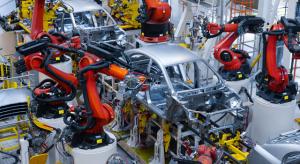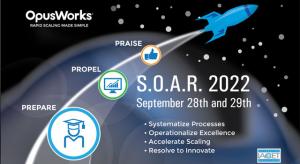All Features

Donald J. Wheeler
The computation for skewness does not fully describe everything that happens as a distribution becomes more skewed. Here we shall use some examples to visualize just what skewness does—and does not—involve.
The mean for a probability model describes the balance point. The standard deviation…

William A. Levinson
Corrective action and preventive action (CAPA) is probably the most important process in any quality management system because so much else depends on it. This includes not only its traditional role as a response to defects, nonconformances, customer complaints, and audit findings, but also outputs…

Donald J. Wheeler
The cumulative sum (or Cusum) technique is occasionally offered as an alternative to process behavior charts, even though they have completely different objectives. Process behavior charts characterize whether a process has been operated predictably. Cusums assume that the process is already being…

OpusWorks
Over two days, engage in eight unique best practice sessions with 11 process improvement and thought leaders at S.O.A.R. 2022, OpusWorks’ annual virtual conference.
Designed to present highly actionable information and game-changing strategies from highly experienced and inspiring human beings, S.O…

Harish Jose
In today’s column, I’m looking at the Ohno Circle in light of German philosopher Martin Heidegger’s ideas. I’ll try to stay away from the neologisms used by Heidegger and will only scratch the surface of his deep insights.
One of the best explanations of the Ohno Circle comes from one of Taiichi…

Richard Harpster
On Dec. 7, 2021, Ford Motor Co. updated its IATF 16949—“Customer specific requirements” (CSR), which require the use of reverse FMEAs (RFMEA) on new equipment (“tooling”). The first sentence of the reverse FMEA requirement reads: “Organizations are required to have a process in place that ensures…

Donald J. Wheeler
Many different approaches to process improvement are on offer today. An appreciation of the way each approach works is crucial to selecting an approach that will be effective. Here we look at the problem of production and consider how the different improvement approaches deal with this problem.…

James J. Kline
Big data is a relatively new phenomenon. Its use is increasing in many organizations. But, as with many new processes, its use cuts both ways. It has positive benefits to both the organization and customers. It also has its potential downside. This piece looks at both with respect to the quality…

Donald J. Wheeler
Students are told that they need to check their data for normality before doing virtually any data analysis. And today’s software encourages this by automatically providing normal probability plots and lack-of-fit statistics as part of the output. So it’s not surprising that many think this is the…

Brittney McIver
At some point, every medical device company will encounter an issue that requires an internal investigation. Whether it’s due to a nonconformance, complaint, CAPA, or an audit issue, you’ll have to conduct a failure or root cause investigation to pinpoint why the issue occurred in order to resolve…

Anthony Tarantino
In 2007, Nassim Taleb described black swans as highly improbable events that had dramatic or even catastrophic effects on markets and economies. Until recently, it seemed that such events were indeed rare.1 There’s now a major rethinking with the world entering the third year of the Covid-19…

Scott A. Hindle
In 2010, new to the world of statistical process control (SPC), I was intrigued by Don Wheeler’s statement that “No data have meaning apart from their context” (from his book, Understanding Variation—The Key to Managing Chaos, SPC Press, 2000, available on Amazon). For a while, I didn’t really get…

V R Vijay Anand
As the world moves toward a new, post-pandemic normal, industries must leverage digital transformation at an accelerated pace. This is already happening. According to IBM, 67 percent of manufacturers have accelerated digital projects since Covid-19.
Although improved operational efficiency is…

Donald J. Wheeler
Last month we looked at analyzing observational data. Here we will consider experimental data and discover a weakness in the way they are obtained that can contribute to the problem of nonreproducible results.
Background
The discipline of statistics grew up in agricultural and biomedical research…

Donald J. Wheeler
Most of the world’s data are obtained as byproducts of operations. These observational data track what happens over time and have a structure that requires a different approach to analysis than that used for experimental data. An understanding of this approach will reveal how Shewhart’s generic,…

Cameron Shaheen
With the holidays fast approaching, manufacturers, distribution centers, and e-commerce providers are working to meet growing customer demand, while also navigating severe supply-chain disruptions and mounting labor shortages. At this point, we all had hoped to have the devastating effects of the…

David Isaacson
Within every organization, problems or incidents arise that can affect the quality of your operations. Take for example, food recalls due to improper food labeling that not only could cause sickness in humans, but also result in a hit to a company’s reputation. Or, automotive product recalls due to…

David Cahn
Lean Six Sigma has improved manufacturing operations and processes for years now. Now the effect of the methodology is extending to supply chain and operations to help eliminate waste and reduce variation. Using lean to eradicate waste and Six Sigma to eliminate defects by reducing process…

James Wells
I was talking recently with a friend who runs an academic program at a major U.S. university. She was telling me about solving a problem in her department and how the solution was obvious so she just did it. She then related how one of her colleagues protested that she should have used some Six…

Gregg Profozich
Welcome to the third installment of our series on lean and Six Sigma. As we saw in the first article, lean and Six Sigma are complementary continuous improvement methodologies that reduce the overall waste and variability, respectively, in production processes. The second article went into some…

Gregg Profozich
The manufacturing world, across industry sectors, has witnessed significant improvements in productivity and competitiveness during the past couple of decades as a result of continuous improvement (CI) methodologies. Two of these methodologies that are recognized as having broad applicability are…

Jay Arthur—The KnowWare Man
There are two ways to increase profits: increase sales or reduce costs. Although most data analysis seeks to find more ways to sell more stuff to more people, addressing preventable problems is an often overlooked opportunity. Preventable problems consume a third or more of corporate expenses and…

Dr T Burns
Augmented reality (AR) means adding objects, animations, or information, that don’t really exist, to the real world. The idea is that the real world is augmented (or overlaid) with computer-generated material—ideally for some useful purpose.
Augmented reality has been around for about 30 years.…

Tom Taormina
After more than 50 years as a quality control engineer and having worked with more than 700 companies, it is my observation that the vast majority of quality professionals hold their prime directive to be reducing defects to the lowest acceptable level by minimizing process variability. Most of us…

Michael Popenas
Product development (PD) is the life blood of a company’s success and is the process for innovation. Today, product life cycles are shrinking due to an ever-increasing number of competitive and disruptive products coming to market quicker.
To stay in business, a company’s PD needs to become more…